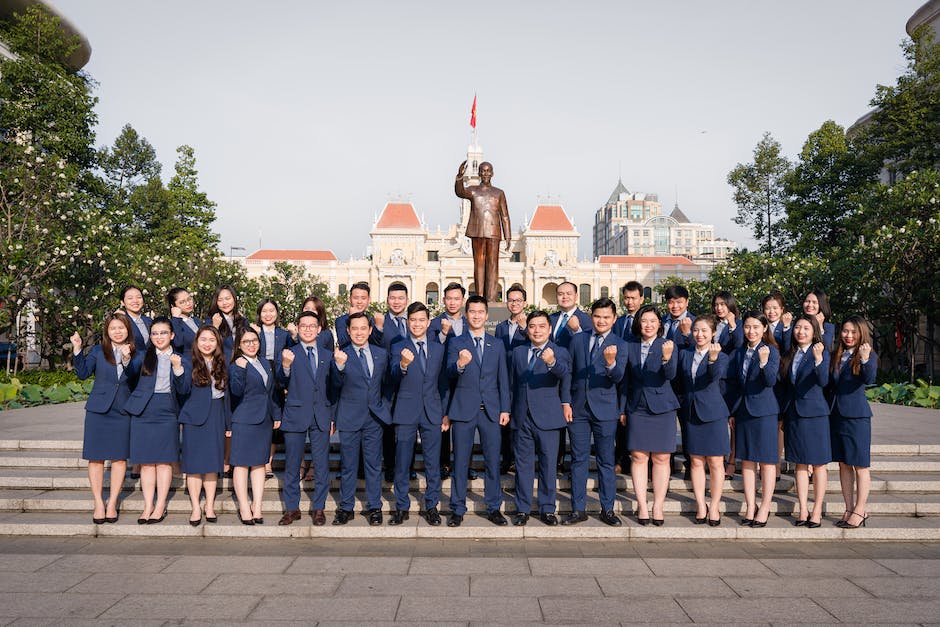Table of Contents
- Introduction
- The Benefits of Implementing 360-Degree Feedback for Employee Performance Enhancement
- How to Design an Effective 360-Degree Feedback Process for Professional Growth
- Overcoming Challenges in Implementing 360-Degree Feedback for Employee Development
- Best Practices for Using 360-Degree Feedback to Drive Continuous Improvement in the Workplace
- Q&A
- Conclusion
“Unlocking Potential, Empowering Success: Elevate your team’s performance and foster professional growth with 360-Degree Feedback.”
Introduction
Introduction:
Enhancing employee performance and professional growth is a crucial aspect of organizational success. One effective tool that organizations can utilize for this purpose is 360-degree feedback. This feedback mechanism involves gathering input from multiple sources, including supervisors, peers, subordinates, and even customers, to provide a comprehensive assessment of an employee’s performance and behavior. By incorporating diverse perspectives, 360-degree feedback offers a holistic view of an employee’s strengths, weaknesses, and areas for improvement. This feedback can then be used to develop targeted training programs, identify skill gaps, and foster individual growth. Ultimately, the implementation of 360-degree feedback can lead to improved employee performance, increased job satisfaction, and enhanced professional development within an organization.
The Benefits of Implementing 360-Degree Feedback for Employee Performance Enhancement

Enhancing Employee Performance and Professional Growth through 360-Degree Feedback
In today’s competitive business environment, organizations are constantly seeking ways to improve employee performance and foster professional growth. One effective tool that has gained popularity in recent years is 360-degree feedback. This comprehensive feedback system provides employees with a well-rounded assessment of their performance, allowing them to identify areas for improvement and capitalize on their strengths. By implementing 360-degree feedback, organizations can reap numerous benefits that contribute to the overall success of their workforce.
One of the primary advantages of 360-degree feedback is its ability to provide a holistic view of an employee’s performance. Unlike traditional performance evaluations, which are typically conducted by a single supervisor, 360-degree feedback involves input from multiple sources, including peers, subordinates, and even customers. This multi-perspective approach offers a more accurate and comprehensive assessment of an employee’s strengths and weaknesses. By considering feedback from various angles, employees gain a deeper understanding of how their actions and behaviors impact others, enabling them to make necessary adjustments to improve their performance.
Furthermore, 360-degree feedback promotes self-awareness and personal growth. By receiving feedback from different sources, employees gain insights into their blind spots and areas for development that they may not have been aware of. This increased self-awareness allows employees to take ownership of their professional growth and take proactive steps to enhance their skills and competencies. Additionally, the feedback received from peers and subordinates can be particularly valuable, as it provides a unique perspective on how an employee is perceived by others. Armed with this knowledge, employees can make targeted improvements to their communication, leadership, and teamwork skills, ultimately leading to enhanced performance and career advancement.
Another significant benefit of 360-degree feedback is its potential to foster a culture of continuous learning and development within an organization. By encouraging regular feedback exchanges, organizations create an environment where employees are motivated to seek out opportunities for growth and improvement. This culture of learning not only benefits individual employees but also contributes to the overall success of the organization. As employees strive to enhance their performance, they become more engaged, productive, and committed to achieving organizational goals. Moreover, the open and transparent nature of 360-degree feedback promotes trust and collaboration among team members, leading to improved communication and teamwork.
Implementing 360-degree feedback also has a positive impact on employee engagement and job satisfaction. When employees feel that their opinions and contributions are valued, they are more likely to be engaged and committed to their work. The feedback received through this process serves as a recognition of their efforts and achievements, boosting their morale and job satisfaction. Additionally, the opportunity to receive feedback from multiple sources allows employees to build stronger relationships with their colleagues, fostering a sense of belonging and camaraderie within the organization.
In conclusion, implementing 360-degree feedback is a powerful tool for enhancing employee performance and fostering professional growth. By providing a comprehensive assessment of an employee’s performance, this feedback system enables individuals to identify areas for improvement and capitalize on their strengths. Moreover, it promotes self-awareness, continuous learning, and a culture of collaboration within the organization. Ultimately, organizations that embrace 360-degree feedback are better positioned to develop a high-performing workforce and achieve long-term success.
How to Design an Effective 360-Degree Feedback Process for Professional Growth
Enhancing Employee Performance and Professional Growth through 360-Degree Feedback
360-degree feedback is a powerful tool that can be used to enhance employee performance and foster professional growth within an organization. By providing employees with feedback from multiple sources, including supervisors, peers, and subordinates, a comprehensive picture of an individual’s strengths and areas for improvement can be obtained. However, in order for the 360-degree feedback process to be effective, it is crucial to design it in a thoughtful and strategic manner.
The first step in designing an effective 360-degree feedback process is to clearly define the goals and objectives. What is the purpose of the feedback? Is it to identify areas for improvement, recognize strengths, or both? By clearly articulating the goals, the feedback process can be tailored to meet the specific needs of the organization and its employees.
Once the goals have been established, the next step is to determine who will be involved in the feedback process. Traditionally, 360-degree feedback involves input from supervisors, peers, and subordinates. However, depending on the nature of the organization and the employee’s role, it may be beneficial to include other stakeholders, such as clients or customers. By involving a diverse group of individuals, a more comprehensive and well-rounded assessment can be obtained.
After determining who will be involved in the feedback process, it is important to establish clear guidelines and expectations. This includes providing participants with a clear understanding of the purpose of the feedback, as well as the specific criteria that will be used to evaluate performance. Additionally, it is important to ensure that participants understand the importance of confidentiality and that feedback will be used for developmental purposes only.
Once the guidelines and expectations have been established, it is time to collect the feedback. This can be done through a variety of methods, including surveys, interviews, or a combination of both. It is important to choose a method that is appropriate for the organization and its employees, as well as one that will yield reliable and valid results.
After the feedback has been collected, it is important to analyze and interpret the data. This involves identifying patterns and themes, as well as comparing the feedback to the individual’s self-assessment. By analyzing the data, strengths and areas for improvement can be identified, and a plan for professional growth can be developed.
Finally, it is important to provide feedback to the individual in a constructive and supportive manner. This includes highlighting strengths and acknowledging areas for improvement, as well as providing specific recommendations for growth and development. It is important to approach the feedback process with a growth mindset, focusing on opportunities for improvement rather than shortcomings.
In conclusion, designing an effective 360-degree feedback process is crucial for enhancing employee performance and fostering professional growth. By clearly defining goals and objectives, involving a diverse group of individuals, establishing clear guidelines and expectations, collecting reliable and valid feedback, analyzing and interpreting the data, and providing constructive feedback, organizations can create a feedback process that is both meaningful and impactful. By investing in the growth and development of employees, organizations can create a culture of continuous improvement and achieve long-term success.
Overcoming Challenges in Implementing 360-Degree Feedback for Employee Development
Overcoming Challenges in Implementing 360-Degree Feedback for Employee Development
Implementing a 360-degree feedback process can be a powerful tool for enhancing employee performance and professional growth. However, like any new initiative, there are challenges that organizations must overcome to ensure its successful implementation. In this article, we will explore some of the common challenges faced when implementing 360-degree feedback and discuss strategies to overcome them.
One of the main challenges organizations face is resistance from employees. Some employees may be skeptical about the purpose and effectiveness of 360-degree feedback. They may fear that it will be used against them or that it will create a hostile work environment. To overcome this challenge, it is crucial to communicate the purpose and benefits of 360-degree feedback clearly. Employees need to understand that the goal is not to criticize or punish, but rather to provide constructive feedback that will help them grow and develop professionally.
Another challenge is ensuring the confidentiality and anonymity of the feedback process. Employees may be hesitant to provide honest feedback if they fear that their comments will be traced back to them. To address this challenge, organizations should emphasize the importance of confidentiality and assure employees that their feedback will be aggregated and anonymized. Additionally, it is essential to select a reliable and secure feedback platform that can protect the anonymity of participants.
A lack of training and support for both employees and managers is another common challenge. Without proper training, employees may struggle to provide meaningful feedback, and managers may struggle to interpret and deliver the feedback effectively. To overcome this challenge, organizations should invest in training programs that educate employees and managers on the purpose and process of 360-degree feedback. These programs should provide guidance on how to give and receive feedback constructively and offer support in interpreting and acting upon the feedback received.
Furthermore, organizations may face challenges in aligning the feedback process with their existing performance management systems. If the feedback from the 360-degree process is not integrated into performance evaluations or development plans, employees may perceive it as a separate and disconnected activity. To address this challenge, organizations should ensure that the feedback received through the 360-degree process is incorporated into performance discussions and used to set development goals. This integration will help employees see the value of the feedback and understand how it contributes to their overall growth and success.
Lastly, organizations may struggle with sustaining the momentum and impact of the 360-degree feedback process over time. Without ongoing support and reinforcement, employees may revert to old habits, and the benefits of the feedback process may diminish. To overcome this challenge, organizations should establish a culture of continuous feedback and development. This can be achieved by providing regular opportunities for feedback, coaching, and mentoring, as well as recognizing and rewarding employees who demonstrate growth and improvement based on the feedback received.
In conclusion, implementing a 360-degree feedback process can be a valuable tool for enhancing employee performance and professional growth. However, organizations must be prepared to overcome the challenges that come with it. By addressing resistance, ensuring confidentiality, providing training and support, aligning the feedback process with existing systems, and sustaining momentum, organizations can successfully implement 360-degree feedback and reap its benefits in employee development.
Best Practices for Using 360-Degree Feedback to Drive Continuous Improvement in the Workplace
Enhancing Employee Performance and Professional Growth through 360-Degree Feedback
In today’s competitive business landscape, organizations are constantly seeking ways to improve employee performance and foster professional growth. One effective tool that has gained popularity in recent years is 360-degree feedback. This comprehensive feedback process involves gathering input from multiple sources, including supervisors, peers, subordinates, and even customers, to provide a well-rounded assessment of an employee’s strengths and areas for improvement.
The use of 360-degree feedback has been shown to have numerous benefits in driving continuous improvement in the workplace. By involving multiple perspectives, employees gain a more holistic view of their performance, allowing them to identify blind spots and areas where they can enhance their skills. This feedback can be invaluable in helping employees set goals and create development plans that align with the organization’s objectives.
One of the key advantages of 360-degree feedback is its ability to provide employees with a clearer understanding of how their behavior and actions impact others. Traditional performance evaluations often focus solely on the supervisor’s perspective, which may not capture the full picture. By incorporating feedback from colleagues and subordinates, employees gain insights into how their actions are perceived by others and can make adjustments accordingly.
To ensure the success of a 360-degree feedback process, it is essential to establish a culture of trust and open communication within the organization. Employees need to feel safe and supported in providing honest feedback, without fear of retribution. This can be achieved through clear communication about the purpose and benefits of the feedback process, as well as training on how to give and receive feedback constructively.
Another best practice for using 360-degree feedback effectively is to ensure that the feedback provided is specific, actionable, and tied to measurable outcomes. Vague or general feedback can be demotivating and may not provide employees with clear guidance on how to improve. By providing specific examples and suggestions for improvement, employees can better understand what is expected of them and take concrete steps towards growth.
It is also important to remember that the purpose of 360-degree feedback is not to criticize or point out flaws, but rather to support employee development. Feedback should be delivered in a constructive and supportive manner, focusing on strengths as well as areas for improvement. By highlighting employees’ strengths, organizations can encourage them to leverage their talents and excel in their roles.
In addition to individual development, 360-degree feedback can also be used to identify patterns and trends at the team or organizational level. By analyzing the feedback data, organizations can identify common areas for improvement and implement targeted training or development initiatives. This can lead to improved team dynamics, increased collaboration, and ultimately, enhanced organizational performance.
In conclusion, 360-degree feedback is a powerful tool for enhancing employee performance and fostering professional growth. By involving multiple perspectives and providing specific, actionable feedback, organizations can help employees gain a clearer understanding of their strengths and areas for improvement. By creating a culture of trust and open communication, organizations can ensure the success of the feedback process and drive continuous improvement in the workplace. With its ability to provide a comprehensive view of employee performance, 360-degree feedback is a valuable tool for organizations looking to invest in their most important asset – their people.
Q&A
1. What is 360-degree feedback?
360-degree feedback is a performance evaluation method that gathers feedback from multiple sources, including supervisors, peers, subordinates, and sometimes even customers or clients.
2. How does 360-degree feedback enhance employee performance?
360-degree feedback provides a comprehensive view of an employee’s performance, allowing them to gain insights from different perspectives. This feedback can help identify strengths and areas for improvement, leading to targeted development plans and increased performance.
3. How does 360-degree feedback contribute to professional growth?
By receiving feedback from various sources, employees can gain a better understanding of their strengths and weaknesses. This knowledge can guide their professional development efforts, enabling them to focus on areas that need improvement and capitalize on their strengths, ultimately fostering their professional growth.
4. What are the benefits of using 360-degree feedback?
Some benefits of using 360-degree feedback include increased self-awareness, improved communication and teamwork, enhanced leadership skills, and a more comprehensive evaluation of performance. It also promotes a culture of continuous learning and development within an organization.
Conclusion
In conclusion, implementing a 360-degree feedback system can greatly enhance employee performance and professional growth. This comprehensive approach allows employees to receive feedback from multiple sources, including supervisors, peers, and subordinates, providing a well-rounded perspective on their strengths and areas for improvement. By receiving feedback from various perspectives, employees can gain valuable insights into their performance, identify areas for development, and take proactive steps to enhance their skills and capabilities. Additionally, the 360-degree feedback system promotes a culture of continuous learning and development, fostering employee engagement and motivation. Overall, organizations that embrace 360-degree feedback can create a supportive environment that empowers employees to reach their full potential and contribute to the success of the organization.




